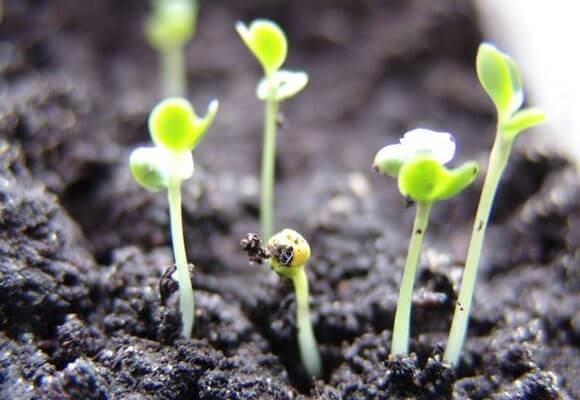
Varieties of cabbage are distinguished by a long growing season. In order to have time to harvest a good-quality head of cabbage, you have to grow this culture through seedlings. Here at this stage, gardeners and lurking real difficulties. Seedlings of cabbage are very tender and moody. In the absence of the necessary conditions, it can become thinner and stretch unnecessarily upward. It is impossible to allow such a state of seedlings, so you need to know how to fix the situation and in the future to prevent this.
Content
Causes
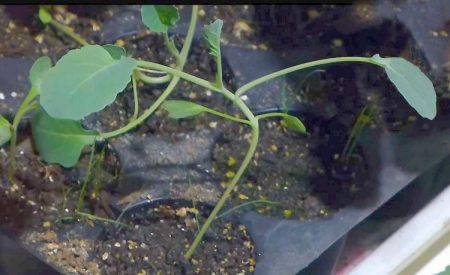
In most regions of Russia, the number of warm days a year is not enough to grow cabbage by sowing seeds into the ground. Therefore, you have to grow it through seedlings. The seedling method is optimal, it allows you to grow crops in the best agronomic terms and with minimal losses.
However, growing cabbage seedlings is not a simple matter. If you do not take into account the basic rules of cultivation, the stalks of cabbage seedlings will become very thin, faded, will be pulled up in search of light and as a result, the cabbage will not tie heads.
Such distortions in the development of seedlings are undesirable and they usually arise for the following reasons:
- incorrect timing of sowing seeds for seedlings and planting it on garden beds;
- acute shortage of natural light and lack of sources of additional illumination;
- violations of the temperature regime during the growing of seedlings;
- deficiency of essential nutrients in the soil for seedlings.
If you do not study and do not apply in practice some of the nuances of growing, the seedlings will quickly become thin, stretch up and will not tie heads.
The optimal time for sowing and planting seedlings
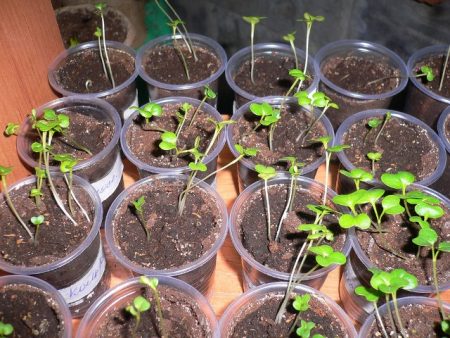
It is extremely important not to overexpose the seedlings in the greenhouse or in the nursery and to plant it in the garden beds in a timely manner. Planting dates are determined by the climate of the growing region, as well as varietal affiliation of cabbage. Early, middle and late varieties are planted in open ground at different times. Usually this opportunity opens from late April to mid-May.
When you set the approximate date for planting seedlings at a constant place, it is easy to calculate the optimal date for sowing seeds for seedlings. It takes about 7 days from sowing to seedlings and another 55 days must be laid for growing cabbage seedlings.
It turns out that you need to sow cabbage seeds in a nursery 2 months before the planned planting in summer cottages or household plots. If you do not plant seedlings at this age, it will certainly begin to stretch. Such planting material has no practical value.
If the seedlings are not timely planted in a permanent place, they will also be drawn out, because as they grow they will not have enough space.
Light mode
Cabbage refers to crops with high demands on the light regime. In conditions of short daylight hours or in low light conditions, the shoots will stretch upward towards the light, their color will fade, they will become thinner and weaker.
Long daylight hours stimulate seedling growth and head sets. The required length of daylight is 14 hours.Given that the seedlings appear in early March, it becomes clear that there will be little natural light. In the morning and evening, a four-hour exposure to seedlings is required.
Temperature mode
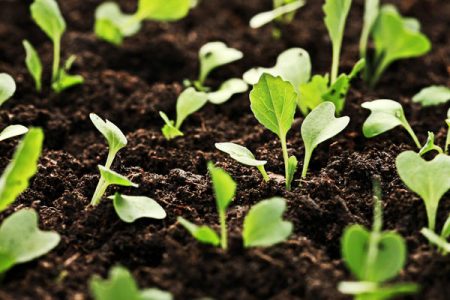
Cabbage does not tolerate heat, and does not tolerate hot weather at all. At an air temperature above optimal, it stretches very strongly, lays on the ground and can die at all.
Having sown the seeds, you need to cover the seedlings with film and keep the room temperature at 19 degrees. When single shoots appear, the film is removed and the temperature is set within 8-10 degrees. This temperature should be kept until the first true leaf.
Lowering the temperature immediately after germination will harden the seedlings and prevent them from stretching.
At the last stage of growing cabbage seedlings in the daytime, you need to set the temperature in the range of 15-18 degrees Celsius, and at night from 6 to 8 degrees. Under such temperature conditions, pulling seedlings is not threatened.
Nutrition and nutrition
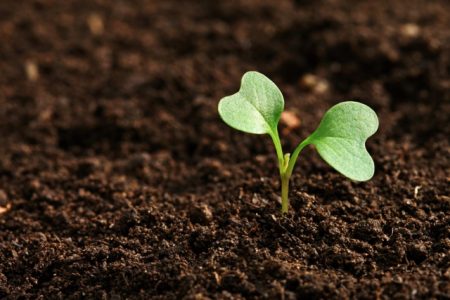
Cabbage seedlings make quite high demands on the level of nutrition. It is necessary to properly prepare the soil for growing seedlings, for which they are mixed together:
- turf land - 50% of the volume;
- humus -50%.
Add to this mixture, per 1 bucket, the following ingredients:
- 100 g of well-washed river sand;
- 1 tbsp. l wood ash;
- 1 tbsp. l superphosphate;
- 1 tbsp. l chicken droppings.
In the process of growing seedlings, it must at least be fed twice:
- in phase 3 of true leaves;
- in the process of picking.
Top dressing is carried out with the following composition:
- 150 g of wood ash;
- 150 g of dry chicken droppings;
- 10 liters of water.
During the picking of seedlings, it is also recommended to tweeze - shortening the main root of plants by one third of the length. This procedure inhibits the growth of the aerial parts of the plant, all nutrition is directed to root growth.
Irrigation
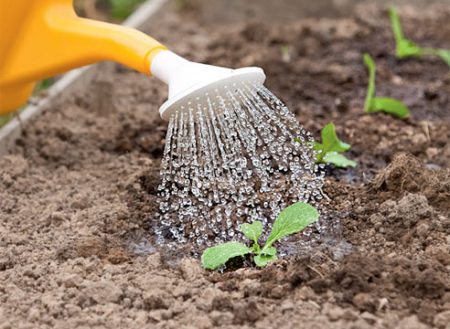
Cabbage leaves have fairly large leaves that evaporate moisture well. Therefore, it must be watered in a timely manner. However, the seedlings will probably stretch with a deficit of moisture in the soil, and with its excess. The stem grows rapidly with soil moisture at the level of 85-90%, especially if the temperature is also exceeded.
Seedlings are also stretched excessively when watering begins before emergence, as well as up to 5 days after their emergence. It is necessary to start watering from 6 days after germination and produce them with a frequency of once every 5 days.
Seeding density
Some vegetable growers, wanting to get more seedling roots per unit area, place too many plants on one square meter. With this approach, the seedlings are in a state of competition with each other and, in an effort to get more light, they will stretch out. Thicken seedlings need to be thinned out and this work should be started no later than the fourth real leaf appears.
Compliance with these conditions will not allow seedlings to stretch.
Signs
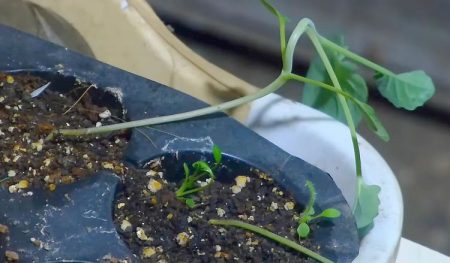
The elongated seedlings are a pitiful sight - it is too long, with a thin stalk of pale color, lies on the ground and poorly forms real leaves. And those leaves that have formed are small in size and do not look viable.
Such seedlings, once in the garden, are sick for a long time and are difficult to recover. As a result, it forms a head of cabbage 30 days later and, often, they are of poor quality. Therefore, it is not necessary to allow the development of such a phenomenon.
For beginner gardeners, we give the qualitative characteristics of healthy seedlings - such as it should be:
- have a stem with a diameter of 0.8 - 1 cm;
- from the bottom pair of leaves to the root neck there should be a distance of 3 to 6 cm;
- height of seedlings before planting from 15 to 20 cm;
- the plant should have 5 to 7 true leaves;
- the leaves should be green, juicy, smooth, without mottling and dried border;
- the stem should be straight, resilient and not have curvatures, thickenings and spots.
Cabbage seedlings grow well in conditions of coolness, plenty of light and when the soil is well seasoned with organic fertilizers.
Effective treatments
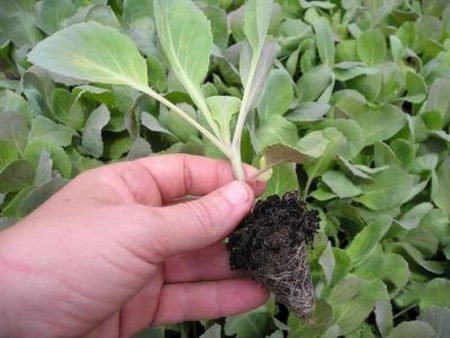
Earlier, we noted that seedlings can grow for various reasons related to violation of the rules of cultivation. Depending on the cause, appropriate measures should be outlined to correct the unfavorable situation.
Backlighting
If the seedlings are elongated due to insufficient lighting, it is urgent to install additional lighting in order to provide daylight hours up to 16 hours a day.
It is necessary to light up not only in the morning and evening hours, but also during the day, if the sky is cloudy. For culture, it is important not only the duration of daylight hours, but also the power of lighting.
For illumination, phytolamps emitting light of a suitable spectrum are used. The wavelength range of the red and blue spectrum should be at the level of 400-660 nanometers.
Temperature reduction
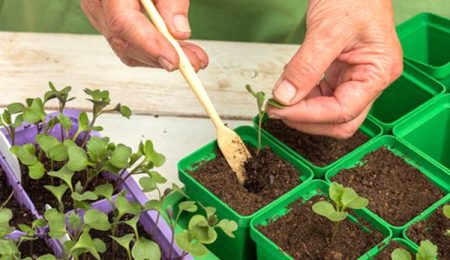
If your plants are stretched out due to high temperature, you need to create conditions characteristic of temperature shock. To do this, boxes with seedlings for 5 days are placed in a room where the temperature does not exceed 4 degrees. After this period, the temperature is raised to 10 degrees and the seedlings are kept in such conditions for another 10 days.
Then the boxes with seedlings are returned to their original place and 10 days they are grown at a temperature of 15 degrees. Then during the day they keep the temperature at 20 degrees, and at night only 9 degrees.
Restoring the correct watering mode
If you find that your seedlings are stretched due to excess moisture in the soil, you need to stop watering for 3 days.
To resume watering, you should not wait until the soil has completely dried out, since the roots can die due to soil drought.
Then the soil is watered approximately every 4 days, wetting the soil layer by 6 mm. Irrigation water should be clean, settled and have a temperature of 20 degrees.
Power Mode Optimization
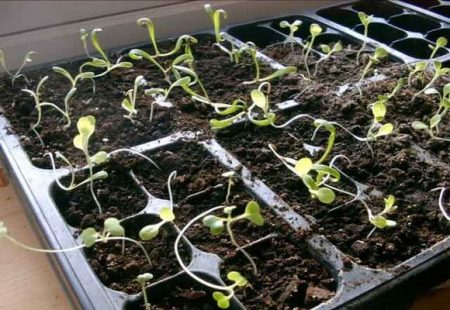
If you, when preparing a nutrient mixture for seedlings, neglected fertilizers or did not apply them enough, then the seedlings could be pulled out due to poor soil.
On such soils, seedlings usually have small and pale leaves. Its stems can also have a changed appearance - they are thin and stiff.
In this case, it is urgent to resort to the introduction of phosphorus-potash fertilizers. In some cases, nitrogen fertilizers may also be needed.
Approximate topical composition:
- potassium chloride - 1 g;
- ammonium nitrate - 2.5 g;
- superphosphate - 4 g;
- water - 1 l.
If there is an excess of fertilizer in the soil, the stalk of the cabbage will also stretch, the leaves will increase in size and acquire a dark green color. In this case, all dressings are suspended and the soil is washed with copious irrigation.
Growth Regulator Processing
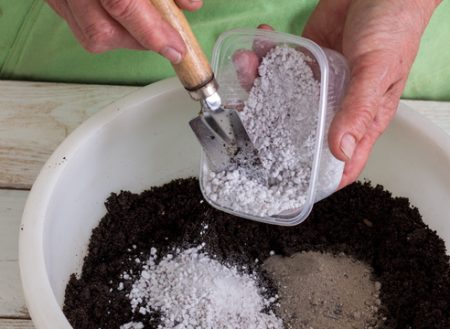
When the seedlings are drawn in the stage of formation of the first true leaves, the use of growth regulators will help stop this negative process:
- "Charm";
- "Athlete".
These drugs can be used both for prevention from stretching and for treatment, if the first symptoms of this phenomenon are detected.
It is allowed to introduce growth regulators by spraying the leaves and watering the plants under the root. After treatment, the root system begins to grow more intensively, and the growth of the vegetative part of plants stops.
Pick
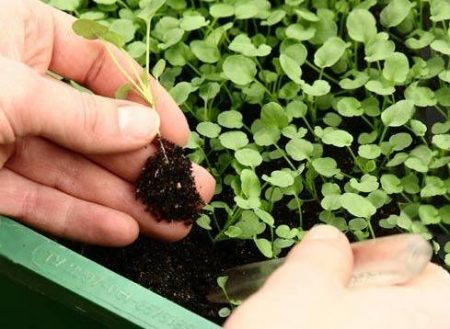
If the degree of stretching of the seedlings is quite strong, then the previous measures are unlikely to help. In this case, the seedlings must be transplanted immediately. You can move them here:
- in a separate small container if they grew in a seedling box;
- in a spacious container, if grown in shallow glasses;
- on the garden bed, if weather and seedling age allow.
When transplanting, seedlings are buried to cotyledon leaves. If the seedlings do not yet have real leaves, and it is very elongated, it must also be dived, but not deepened so much.
Removing multiple leaves
When seedlings are grown in separate and fairly spacious containers and their extension has occurred, you can resort to the cliff of a pair of lower leaves. After this procedure, the growth of seedlings is suspended, and the roots are strengthened. If the effect was insufficient, then the procedure can be duplicated in a week.
Land sprinkling
If the boxes, with elongated seedlings, have a margin of height, it is necessary to add earth to the stems. This approach is no less effective than a pick.
You can raise the soil level to the bottom pair of leaves by sprinkling. Due to this, additional roots of the plant will grow.
Loop forming
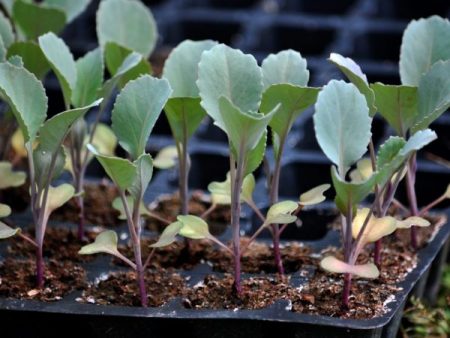
If the stalk has lengthened too much, they dig it up, having previously coiled it with a noose. To do this, for some time, reduce seedling watering to a minimum and lower the temperature to 5 degrees Celsius.
From such an impact, the stem becomes sluggish and can be curled into a recess in a ring. The twisted stalk is sprinkled with soil, then this soil is compacted and watered.
After rehabilitation measures on elongated seedlings, if success is achieved, and it has ceased to grow intensively, she is provided with the same care as ordinary seedlings, strictly adhering to all requirements.
Seed reseeding
It happens that the seedlings are so long that any measures for its rehabilitation seem senseless and doomed to failure. In such a situation, the best option would be to throw out the overgrown seedlings and make seed reseeding on the vacated area.
In this case, the cabbages will most likely appear later than usual, but they will be better than those that could be grown from flawed elongated seedlings. And not the fact that they would have grown at all.
Resistant varieties
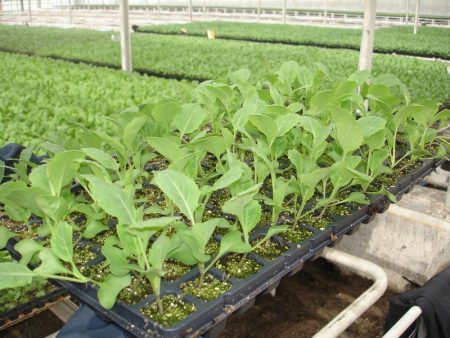
Of the popular varieties of cabbage relative resistance against drawing seedlings have:
- Globe Master F1. Belongs to the group of mid-ripening varieties, the growing season is approximately 80 days. The forks are tight, round, weighing about 3 kg. Plugs do not crack. It is used for salads and for processing.
- June. One of the most popular early varieties. Almost 70 days elapse from planting seedlings to heading out. Small forks, compact, weighing up to 2.5 kg. Used only for salads.
- Lika. Common late variety. The growing season is 150 days. Heads of cabbage are rounded flat, light green, weighty, weighing up to 4.5 kg. It has a great taste, the forks do not crack, they withstand transportation and storage well.
- Present. Old mid-season variety of Russian selection. Vegetation lasts 120 days. Heads are round, whitish, and weigh 4 kg. It is used for salads, pickling and short-term storage.
- Surprise F1. The variety is early, you can pick up heads of cabbage for 55 days from planting seedlings. A head of cabbage of round shape, increased density, weighing 1 kg. It is consumed fresh.
Preventative measures
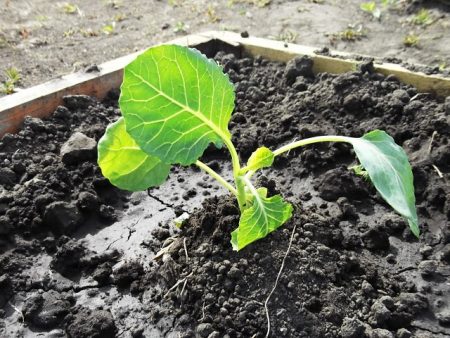
To prevent drawing seedlings of cabbage, you must initially follow the rules regarding sowing seeds.
Preparatory work must begin in the fall. Of great importance is the preparation of a nutrient mixture for the planned sowing of seeds. It is necessary to properly prepare the ingredients and mix them in the recommended amounts.
In early spring, it is necessary to bring the soil into the warm room of the nursery, put it in the seedling boxes, wait a few days for the soil to warm up to the desired temperature. After this, you can proceed directly to sowing.
Seeds are sown shallow - about 1 cm. After completing the sowing, it is necessary to cover the boxes with a synthetic film and place for a week in a room with a temperature of 20 degrees Celsius.During this time, the seeds will germinate and shoots will appear.
Immediately after germination, in order to avoid intensive growth of seedlings and stretching, it is necessary to sharply reduce the temperature to 11 degrees in the room. At such a low temperature, seedlings should grow until the first true leaf appears. Further, the temperature gradually rises to 18 degrees above zero.
For germinating seeds, only the appropriate temperature and humidity are needed. And with the advent of single sprouts of cabbage, it is necessary to provide plants with at least 12 hours of light day. If the box with seedlings is on the north side, then it is clear that the plants will not have enough light. It is necessary to hang a lamp with a fluorescent lamp.
In the room where cabbage seedlings are grown, there should always be high humidity. It is enough to carry out watering twice a week, but at the same time, it is important not to overfill. If the air temperature rises sharply on a spring sunny day, you need to arrange ventilation or take out boxes with seedlings on the street.
2 weeks after germination, it is imperative to do a pick. The day before the seedlings are transplanted to another place where they will be provided with a large area of nutrition, the seedlings must be well watered. Thanks to this, the picking process will take place with minimal trauma for the roots.
Simultaneously with the picking, it is also desirable to do the tweezing - cut the main root of the seedling by one third. This technique is also able to restrain the uncontrolled growth of the ground part and prevent the seedlings from stretching out.
When picking, seedlings are buried to cotyledon leaves. Further seedlings need a lot of sun or backlighting, moderate watering and technological temperature.
Advice
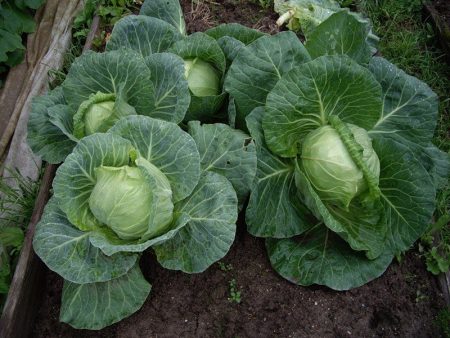
Beginning vegetable growers often puzzle over how to properly plant extended cabbage seedlings in open ground. Such seedlings can also be safely planted and get a completely normal crop from it. On the bed it is placed in the phase of the fourth real leaf. Varieties of different ripening time are planted at one time:
- early ripening - in April - May;
- mid-season - in May - early June;
- late ripening - in May.
Landing in a permanent place is carried out in rows according to the scheme: 60 by 40 cm. In each hole, when planting, it is recommended to add 150 g of wood ash and rotted manure and mix these ingredients with soil well.
Overgrown cabbage seedlings with a long stem, having a good root system, must be planted. Its stem must be twisted into a loop and bury in the hole. In this case, you must be careful not to damage the roots or stem.
Methods of planting elongated seedlings:
- If the seedlings have grown, they are planted in the ground at an angle of 45 degrees. To plant at such an angle you will need an elongated hole. The curved portion of the stem does not need to be straightened, as it may break. The two lower leaves are allowed to be torn off, and the seedling is sprinkled with earth to the remaining lower leaves.
- If the seedling has an elongated but straight stem, its root is shortened by a third of the length. The young plant is buried to the leaves, leaving a growth bud above ground level. It’s okay if the cotyledon leaves are sprinkled with earth.
After planting, the soil is compacted, watered abundantly and mulched. In the first days of growing on a garden bed, seedlings are covered: at night - from the cold, during the day - from sunlight.
During the growth period of elongated seedlings, they regularly spud it. This agricultural technique contributes to the emergence of additional roots.
Reviews
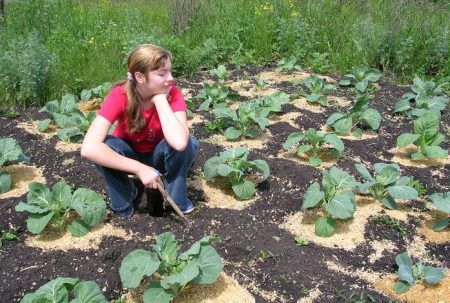
Gardeners grow cabbage seedlings in different ways and each has its own method of preventing seedlings from stretching. Get acquainted with the reviews of our compatriots.
Vladimir Seliverstov, 48 years old, Tula region
“For several years in a row I tried to independently grow cabbage seedlings in the apartment. This lesson did not give me pleasure, and it took a lot of work. She had to be lightened up, taken out to the street, watered to feed.And the result was not very good. Now I use a simple way. I wait until the soil warms up at the dacha in April, sow the seeds of cabbage in the open ground and cover each plant with cropped bottoms of plastic bottles. In the afternoon, when the heat is established, I remove these covers, and put them back at night. There are no more problems. ”
Nadezhda Naydenova, 43 years old, Eagle
“This year I sowed the seeds of cabbage in mid-March. Boxes with seedlings were on the windowsill. After sprouting, I lit up its lamps, but due to excessive domestic heat, the result was deplorable. Seedlings had very thin stems and lay down on the ground. I had to throw away all the seedlings and sow again. ”
Maria Timofeeva, 37 years old, Orenburg
“We built a polycarbonate greenhouse in the country. By the end of April, the soil in it is already warming enough. During this period, I put seedling boxes there, fill them with soil, spilling well, and then sow cabbage with seeds. Less than a week passes before the emergence of seedlings. After that, I lower the temperature in the room to 10 degrees, and I keep such conditions for 10 days. Therefore, my seedlings do not stretch and are always strong and healthy. ”
People who do not want to spend money on the purchase of seedlings of cabbage should definitely learn to grow planting material on their own. Cabbage is a moody culture and it is difficult to grow good seedlings. But, armed with our recommendations and having fulfilled all the technological requirements, you can fully get strong and healthy seedlings in the end.

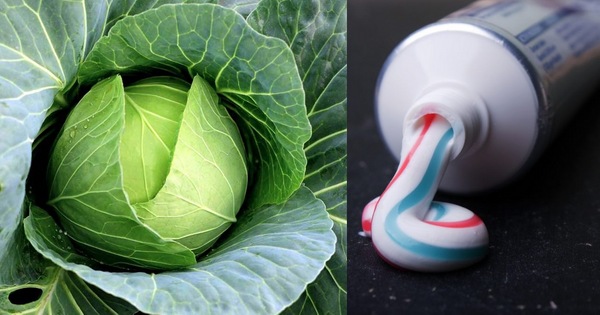
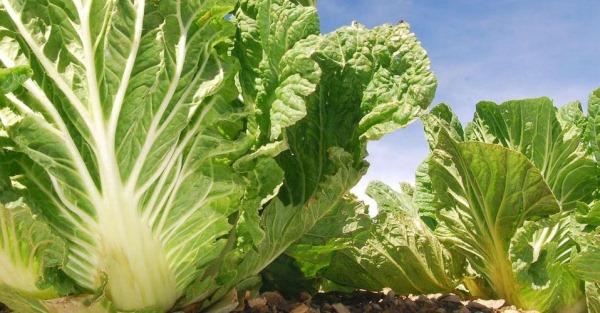
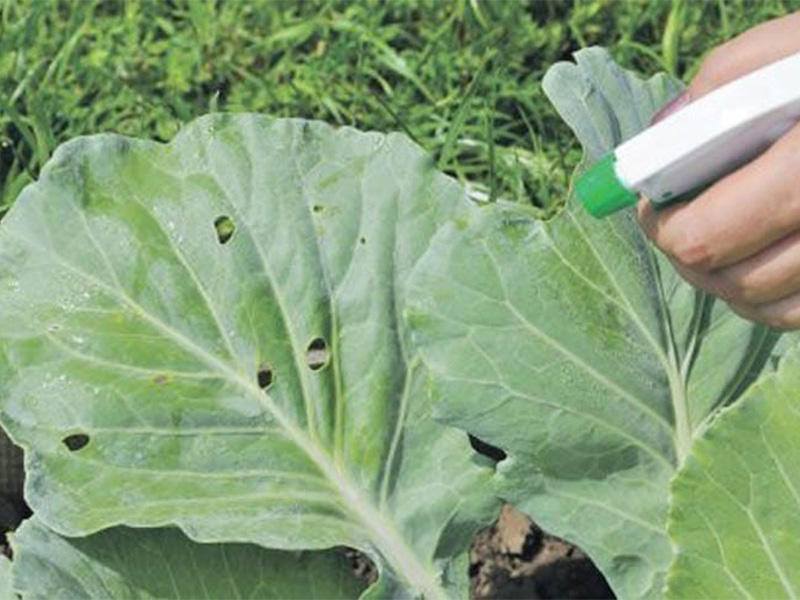
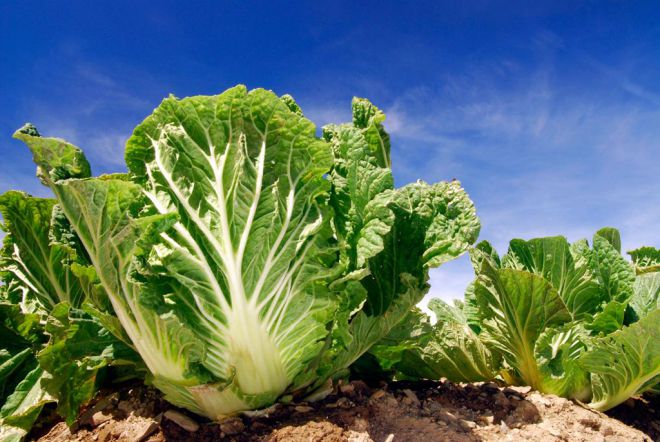 How to grow Chinese cabbage on your site?
How to grow Chinese cabbage on your site?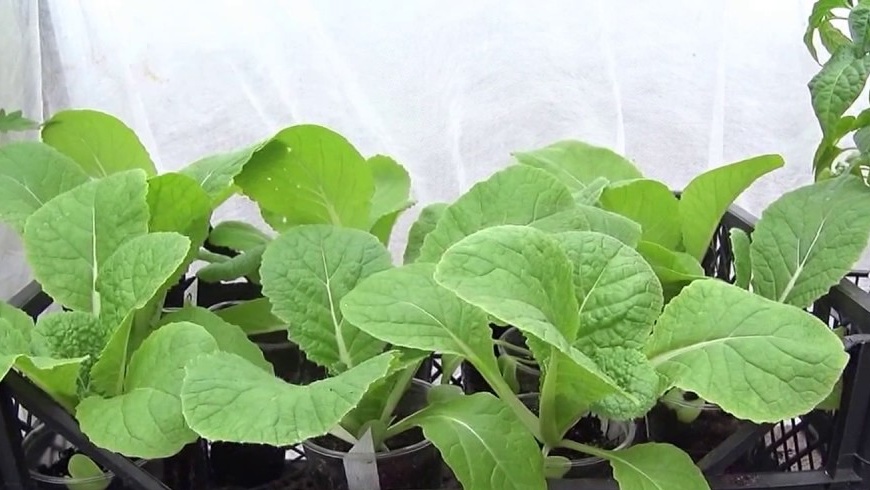 When to plant Chinese cabbage on seedlings in 2024
When to plant Chinese cabbage on seedlings in 2024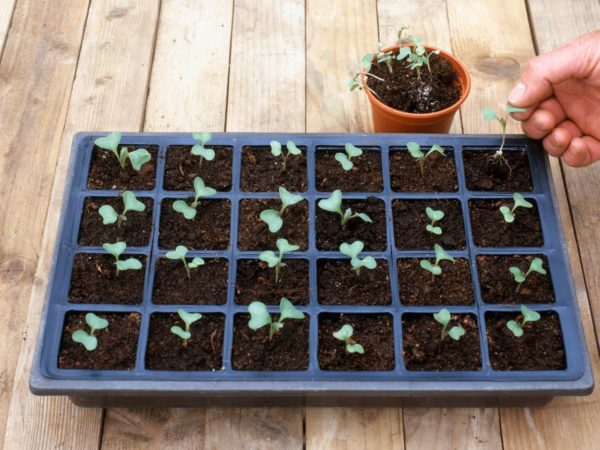 When to sow cabbage for seedlings in 2019 on the moon
When to sow cabbage for seedlings in 2019 on the moon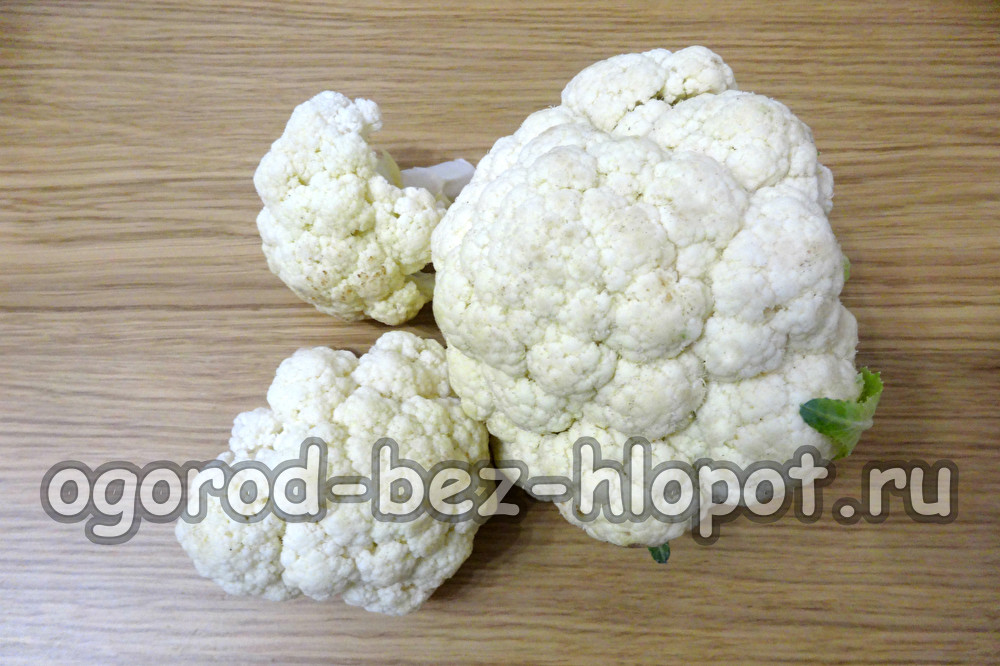 Cauliflower: how to grow large snow-white inflorescences
Cauliflower: how to grow large snow-white inflorescences